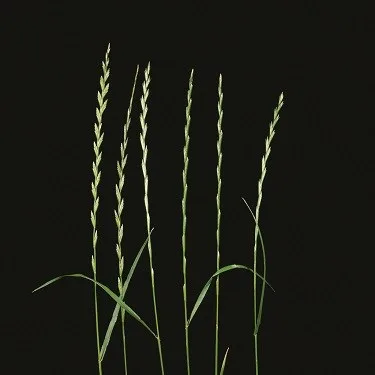
Perennial rye-grass
Lolium perenne
Importance
Rye-grasses compete with a crop to roughly the same extent as sterile (or barren) brome and rough meadow-grass; other grasses, notably common couch, loose silky-bent and annual meadow-grass, are generally less competitive.
However, in those areas where rye-grass is a serious problem, substantial yield losses can occur. Little information on the impact of rye-grass infestation on cereal yield is available.
Some consider that low populations of rye-grass (up to 50 plants/m squared) will have only a low to moderate effect on yield, while larger populations (60 plants/m squared and above) will reduce yields dramatically.
In contrast, other data has indicated that with as few as 5-7 rye-grass plants/m squared, yield losses in the order of 5-15% may result.
It is evident, however, that due to the ability of rye-grass plants to tiller extensively, depending on the situation, even a few heavily tillered plants/m squared may adversely affect grain yields.
Leaf blade
Dark green and hairless. Leaf blades folded in shoot.

Description
Large, dark green tufted perennial 30 - 60 cm. Flower head is flattened, with the spikelets arranged alternatively on opposite sides of the stem. Spikelets are awnless, unlike Italian rye-grass. Similar to common couch but has no rhizomes and the underside of the leaves are glossy.
The flower head may also be confused with couch grass. However, the spikelets of perennial rye-grass lie at 90° unlike couch where spikelets lie flat against the stem.

Perennial rye-grass flower heads.

Perennial rye-grass flower head. © www.aphotoflora.com
Ligule

Short: up to 2 mm. Blunt.
Auricles
Small if present.
Lifecycle
Perennial rye-grass, as the name infers, is a perennial plant. Seeds germinate soon after falling to the ground and stems can vegetate.
Management
Herbicide resistance in perennial rye-grass occurs less frequently than in Italian rye-grass though with both species, an integrated approach that incorporates cultural measures alongside targeted herbicide use, is considered an effective strategy for the long term.
In situations where there is a mixed grassland and arable rotation, seed return to the soil during the grassland phase should be minimised in order to reduce seed carry over into successive arable crops. In this respect, grazing and cutting dates can have a great effect on seed return.
Cultivation can be used to help manage existing infestations of rye-grass. Whilst germination of rye-grass seed occurs over an extended period, some reduction in population can be achieved using stale seedbeds.
Following a grass ley, ploughing down of shed seed and subsequent shallow cultivation in successive cropping seasons will help reduce the survival of shed seed. Adjusting the crop rotation to incorporate broad-leaved crops not only provides greater opportunities for the use of cultural control methods but also widens the range of herbicides that may be used.

Perennial rye-grass ligule. © HGCA

Perennial rye-grass ligule. © Blackthorn Arable.

Perennial rye-grass


